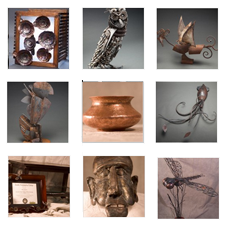Welding Inspection Program

The Welding Technology Department at Austin Community College offers a Certificate and an Associate of Applied Science (AAS) in Welding Inspection. The Inspection courses are offered only at the Riverside Campus; the other welding courses are available at the Round Rock Campus and the Riverside Campus.
The Inspection Certificate is a two semester program consisting of four courses. The first two courses (WLDG 1427 Welding Codes and Standards and NDTE 1405 Introduction to Ultrasonics) must be taken together and are offered only in the fall semesters. The second two courses (NDTE 2401 Advanced Ultrasonics and NDTE 2411 Preparation for Certified Welding Inspector Exam) must be taken together and are offered only in the spring semesters.
The Welding Inspection AAS is a two year program which builds on the Inspection Certificate. It is designed to give the student a background in welding as well as training as a welding inspector and a foundation of general education courses.
In addition to tuition and fees, there are significant costs associated with this program. The student will be responsible for purchasing the current Structural Welding Code- Steel AWS D1.1 and other books and supplies. The student will also be responsible for paying their own costs associated with taking the CWI exam (test fees, travel, etc.). For details, please see the syllabi for the inspection courses.
The Welding Inspection program at Austin Community College prepares the student for two career paths:
- Certified Welding Inspector (CWI), nationally accredited by the American Welding Society. CWIs are welding specialists possessing highly defined skills in determining if a weld under examination is in compliance with the written criteria of a welding, structural, piping or bolting code. At the conclusion of study, the student will apply to the American Welding Society for approval to take a battery of difficult, expensive examinations administered at regional test sites throughout the United States. The examinations are timed and administered in three parts to determine (1) the candidate’s knowledge of a wide range of mechanical and metallurgical topics on distortion control, thermal transfer, weld joint design, procedure writing, (2) how well the candidate can make close-tolerance decisions using inspection instruments applied to flawed weld samples, and (3) if the candidate is knowledgeable in one of several welding codes, which in the case of the ACC Welding Inspection program, will be the 539-page AWS D1.1: Structural Welding Code–Steel.
- Nondestructive Testing technician (NDT), certifiable at Level II Ultrasonics, in accordance with the American Society for Nondestructive Testing. Similar in concept to medical sonography, industrial ultrasound requires the broadcasting of high-frequency sound waves into critical welds to detect internal discontinuities that would predict weld failure. This is done by developing scan plans using algebraic formulas and trigonometric plotting, which the student is taught in class. Having access to ACC’s comprehensive welding facility, the student will produce flawed weld specimens, check them ultrasonically in our metallurgical laboratory, and then exchange specimens with fellow students to compare test results. This instills the high level of confidence demanded of an industrial ultrasonics technician when making judgement calls for expensive weld repairs, which are based on the technician’s knowledge of the acoustic waveforms that appear on the electronic scope in a format similar to an electrocardiogram. To do this, the student is trained in accordance with ASNT SNT-TC-1Ain compression- and transverse-wave theory using analog, digital, and phased array instrumentation.
At the completion of the Welding Inspection program, the student will have the option of entering into either of these two in-demand occupations, although some graduates choose to work in industries where combined CWI and NDT skills are especially valued. The breadth of employment possibilities is vast, including new construction, military, petrochemical, infrastructure rebuilding, nuclear, rail, power generation, aerospace — any industry where there is potential for loss of life, and where critical welds must be examined for integrity in compliance with codes, specifications and contract documents.
The student who is considering Welding Inspection as a career must be prepared to apply vigilant and constant critical thinking, must be willing to learn the mathematical formulas required for mapping flaw locations in critical welds, must be punctual and have a strong work ethic, must be prepared to undergo the background checks and unannounced drug tests required when working in high-security industrial environments, and must be of the demeanor to work with others towards the common goal of safeguarding the public.


